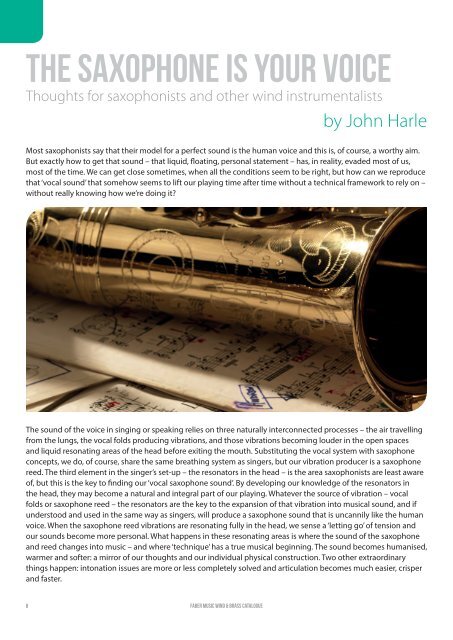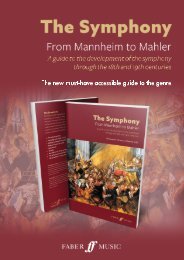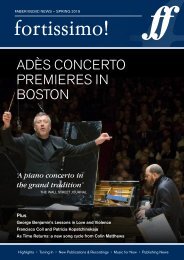Wind & Brass Catalogue
Tuition and repertoire books for Wind and Brass instruments are a big part of our publishing output, so big in fact we couldn’t fit them all in this catalogue! We hope that this resource will help you find out more about the titles that you already know, and highlight those hidden gems you may not have come across before.
Tuition and repertoire books for Wind and Brass instruments are a big
part of our publishing output, so big in fact we couldn’t fit them all in this
catalogue! We hope that this resource will help you find out more about
the titles that you already know, and highlight those hidden gems you
may not have come across before.
You also want an ePaper? Increase the reach of your titles
YUMPU automatically turns print PDFs into web optimized ePapers that Google loves.
THE SAXOPHONE IS YOUR VOICE<br />
Thoughts for saxophonists and other wind instrumentalists<br />
15<br />
DAILY PRACTICE<br />
EXERCISES<br />
Most saxophonists say that their model for a perfect sound is the human voice and this is, of course, a worthy aim.<br />
by John Harle<br />
But exactly how to get that sound Essential – that techniques liquid, floating, for regular personal practice statement – has, in reality, evaded most of us,<br />
most of the time. We can get close sometimes, when all the conditions seem to be right, but how can we reproduce<br />
that ‘vocal sound’ that somehow seems to lift our playing time after time without a technical framework to rely on –<br />
without really knowing how we’re doing it?<br />
The sound of the voice in singing or speaking relies on three naturally interconnected processes – the air travelling<br />
from the lungs, the vocal folds producing vibrations, and those vibrations becoming louder in the open spaces<br />
and liquid resonating areas of the head before exiting the mouth. Substituting the vocal system with saxophone<br />
concepts, we do, of course, share the same breathing system as singers, but our vibration producer is a saxophone<br />
reed. The third element in the singer’s set-up – the resonators in the head – is the area saxophonists are least aware<br />
of, but this is the key to finding our ‘vocal saxophone sound’. By developing our knowledge of the resonators in<br />
the head, they may become a natural and integral part of our playing. Whatever the source of vibration – vocal<br />
folds or saxophone reed – the resonators are the key to the expansion of that vibration into musical sound, and if<br />
understood and used in the same way as singers, will produce a saxophone sound that is uncannily like the human<br />
voice. When the saxophone reed vibrations are resonating fully in the head, we sense a ‘letting go’ of tension and<br />
our sounds become more personal. What happens in these resonating areas is where the sound of the saxophone<br />
and reed changes into music – and where ‘technique’ has a true musical beginning. The sound becomes humanised,<br />
warmer and softer: a mirror of our thoughts and our individual physical construction. Two other extraordinary<br />
things happen: intonation issues are more or less completely solved and articulation becomes much easier, crisper<br />
and faster.<br />
8<br />
Faber Music wind & <strong>Brass</strong> <strong>Catalogue</strong>


















